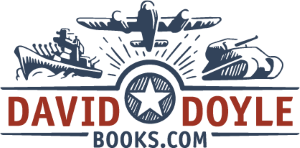|
| Please Support our Sponsors | ||||
 |
 |
Delaunay-Belleville Armored Car
.jpg)
Specifications
| Country of Origin/Used by: | Great Britain |
| First Produced/Service Dates: | 1914/1915 |
| Manufactured by: | Chassis: Automobiles Delaunay-Belleville; Armor: Forges et Chantiers de France? |
| Crew: | 4-5? |
| Armament: | Turret: (1) Maxim .303 Machine Gun |
| Engine: | 6 Cylinder Gasoline |
| Miscellaneous Info: |
Around the same time as the
Lanchester,
Rolls-Royce
1914,
and Talbot Admiralty Turreted Pattern Armored Cars were produced, three
(3) French Delaunay-Belleville touring car chassis were also used to
build armored cars. These Delaunay Armored Cars were built
concurrently or just prior to the aforementioned cars. Based upon
the timing of their production (and other facts below), it seems
possible that the Delaunays were built as a "proof of concept" design
for the new semi-standardized "Admiralty Pattern" hulls and turrets.
Regardless, the Delaunay hulls and turrets were very similar to the
Rolls, etc. cars, but not identical. Specifically, they had round,
versus beveled, turrets. Also at roughly the same time, the
British were having difficulties bending/shaping armor plate into curved
shapes for use in building round turrets. The Delaunay-Bellevilles very
likely used boilerplate (instead of proper steel armor), as they were
reportedly built by Forges et Chantiers de France in Dunkirk.
Therefore, the Delaunay's may be the first British World War One-Era
armored cars fitted with a rounded turret. Another indication these armored cars may have been built as "proof of concept" vehicles, was that they do not appear to have been used in France. Very soon after their construction, they were sent to England, where they were indeed utilized. In addition, while "back" in England, the three cars were upgraded/improved as seen in contemporary photos. These "improved" (vs. "Original") vehicles, were now closer in appearance to the semi-standardized "Admiralty Pattern" cars previously mentioned. Based upon their new appearance, we believe it's possible the original boilerplate hulls and turrets may have been replaced with armor-grade semi-standardized hulls. Regardless, both versions used the same chassis. The fate of the Delaunay-Bellevilles is just as interesting as their creation. Two cars are presumed to have been used as intended in the UK for a short time after their construction. Although for how long, remains unknown. However, one car did have its steel hull removed and converted to a unarmored tender. After removal, the spare armored hull was fitted to an American tracklaying Killen-Strait tractor to be evaluated as the first armored tracked vehicle. Thusly, the Delaunay-Belleville was also part of the story of the creation of the tank. |
| Data Sheet Available: |
 Delaunay-Belleville Armored Car Data Sheet
by Dave Haugh
Delaunay-Belleville Armored Car Data Sheet
by Dave Haugh |
Photos
References Available
Online
| Reference | Source/Provider |
| Delaunay-Belleville Armored Car (Original Design) Information & Photos | Armored Cars in the WWI |
| Delaunay-Belleville Armored Car (Improved Design) Information & Photos | Armored Cars in the WWI |
Printed
| Reference | Author |
| A Photo History of Armoured Cars In Two World Wars | George Forty |
| British Armoured Cars: 1914-1945 | B.T. White |
| Early Armoured Cars (AFV Profile #9) | Major General N.W. Duncan |
| Early Armoured Cars (Shire Album #209) | E. Bartholomew |
| Encyclopedia of Armoured Cars | Duncan Crow & Robert J. Icks |
| The Royal Armoured Corps Tank Museum: Armoured Cars (1900-1963) | |
| War Cars: British Armoured Cars in the First World War | David Fletcher |
Hobby Modeling
Kits and Accessories
| Model Kit | Manufacturer | Scale | Other Information |
| Aftermarket Set | Manufacturer | Scale | Other Information |
Model Photos
| Reference | Source/Provider |